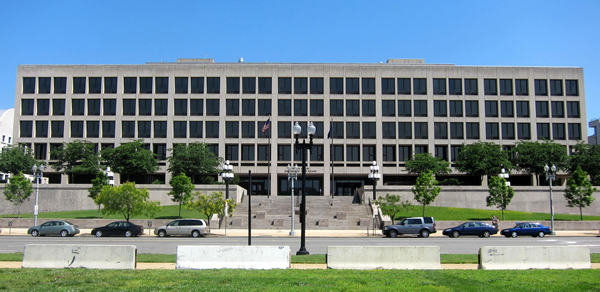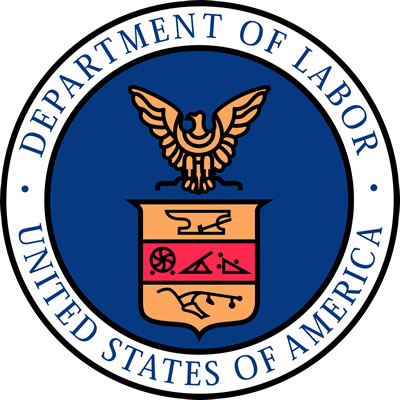The Fiduciary Rule What's all the Fuss About?
Introduction:
Can I have a show of hands please? How many of you know the difference(s) between "defined benefit" pension plans and 401k, IRA, 403b, and other forms of "defined contribution" plan?
Some of the major differences are: the purpose of the plan, who makes the investment decisions, the content of the investment portfolio, and goal achievement guarantees, if any.
How many regulators, congresspersons, American presidents, or financial services industry overseers could explain these distinctions? Right, and yet it is these people who create the rules that the "fiduciaries" (who actually should know the differences) must operate within and under.
The main thrust of the DOL Fiduciary Rule is to prevent conflicts of interest between investment advisors and their clients... sounds like what the SEC and FINRA have been doing for decades.
In the process, they are requiring employers to "guarantee" the performance of plan participant stock market investment decisions.
One could make the case, that the DOL regulations are creating a situation that, itself, on the personal portfolio level, a violation of the Fiduciary Rule.
The problems are that the DOL is trying to apply: (1) pension plan rules to defined contribution programs, (2) Wall Street investment performance measurement protocols to what they have incorrectly labeled retirement "income" programs, and (3) fiduciary responsibility to persons and businesses who are merely helping clients and employees execute their own personal, discretionary, investment transactions.
Will employees be able to sue their employers to recoup employer contributions that they have lost in the stock market?
So why the "media" fuss about aborting implementation of the DOL Fiduciary Rule? They simply don't know that adequate fiduciary rules are already in place and that the new rules are already causing significant harm to the very people they (the media) think are being protected.  Retiree Joe has an under $200,000 IRA generating roughly 6.0% spending money (net after management fees, commissions Wall Street service charges, etc)... he spends more than his account produces, thus depleting his working capital (and decreasing his income) every year.
Retiree Joe has an under $200,000 IRA generating roughly 6.0% spending money (net after management fees, commissions Wall Street service charges, etc)... he spends more than his account produces, thus depleting his working capital (and decreasing his income) every year.
The new DOL rules will reduce his spending money an additional 17%... tripling his direct, fixed fee, withdrawals.
Additionally, the new rules do absolutely nothing to eliminate the parasitic siphoning of billions of dollars out of client portfolios and into Wall Street institutional pocketbooks.
Finally, and perhaps potentially most dangerous, the new rules could take client complaints (about the failure of their own decision making) out of the arbitration process and into the courts for settlement.
ears ago, I was meeting with the account executive in charge of my investment management portfolio relationships at a major "wire house". His message was a clear reflection of where Wall Street was heading: "Frankly, we make a whole lot more money charging a flat annual fee than we do with individual commissioned transactions... and with a lot less liability. Let's get your "book" into the hands of some of our great, in-house, pooled portfolio managers".
At the time, these were "wrap accounts", where every person has precisely the same portfolio... totally different from individually managed, separate account, investment portfolios.
The media is (inadvertently, I'm sure) playing right into Wall Street's hands by trying to keep the new DOL rules in place... just one more piece of their attack on private investment portfolios... yes, your IRAs, 403bs, 401ks, individual investment accounts, etc.
NOTE: Investors who are dealing with any form of registered investment advisor are already dealing through willing, responsible, fiduciaries... and have been for decades.
The "new" rules do nothing to extend fiduciary responsibility to the entities that create and market inappropriate, and often quite speculative, products to "retirement program" participants... and the institutionalized service fee "pocket picking" continues unchecked.
What DOL scrutiny and fining power has done effectively, is to throw financial services' company compliance departments into a "cover their ass" frenzy of unprecedented proportions.
Here's an example:
The DOL has determined that it is a Conflict of Interest (COI) in retirement programs if the same "entity" collects both management fees and trading commissions from a client. Yet, it is not a COI for that very same "entity" to collect management fees, transaction charges, service fees, ticket charges, ADR fees, custodian fees, etc. in the very same account... or management fees + commissions + service charges, etc. in a regular trading account. So what if (within the entity), the management fees are totally directed to one person or firm; commissions totally to a second person or firm; and all other charges are directed through the "house"?
So what if (within the entity), the management fees are totally directed to one person or firm; commissions totally to a second person or firm; and all other charges are directed through the "house"?
You guessed it, still deemed a COI, so that Wall Street now get's its maximum fixed cash flow (regardless of trading activity) from all retirement program. Yes, that's exactly what I said: "the same trading fee is charged even if there are no trades in the account."
media, obsessed as it is on bashing the Republicans, is missing the big story. Killing the new fiduciary rules just leaves things as they are now... with more than enough rules and requirements to get the job done.
The real story, the one that the media is ignoring, is the increased theft of investment capital from retirees, retirement programs of all shapes and sizes, and many other investment programs.
Phil makes 6% spending money on his portfolio of income Closed End Funds, net/net, after all fees and commissions...
His broker and manager could be fined because the fees plus "variable cost" commissions are "too high".
Instead of dictating that the commissions be reduced individually, or capped collectively, regulators turn the variable expenses into a fixed fee that not only reduces Phil's spending money, but also reduces his ability to grow his annual income.
The DOL rules turn variable expenses into fixed deductions from investment portfolios while doing nothing to halt broker/dealer fees and charges from being taken as well.
The Media is allowing the Wall Street directed (ya think) DOL to bring the same level of thievery to individual retirement income portfolios (not the same thing as pension plans) as they have institutionalized in employer benefit programs... where the most popular of all Retirement Income Funds produces less than 2% in spending money.
There are no managed income Closed End Funds in 401k plans because 2% spending money with low expenses is somehow better than 6% in your wallet after higher expenses.
The DOL's proposals are supporting the Wall Street agenda by increasing the fixed costs of investment management by 50% or more... by nearly 150% in some "income only" managed portfolios
At the same time, new regulations codify self serving Wall Street myths that make it virtually impossible for employee benefit plan participants to create "retirement ready" income portfolios.
Another example:
Picture an IRA portfolio generating 6% in dividends and interest after all trade commissions, management fees and miscellaneous Wall Street charges. (Yes, such accounts really do exist). Of the $18,000 the retiree receives, he spends roughly $13,000 and reinvests the rest. The new DOL rules will reduce his reinvestment by $3,500.... and reduce his income growth significantly.
Clients who are spending all of their deferred taxation income now, will be forced to reduce either their standard of living or their portfolio capital to satisfy the new DOL requirements.
While the DOL focuses on the internal costs of investment products, it totally neglects what it says it thinks is the retirement income purpose of employer provided investment programs.
One more example:
Investment managers trade securities to help grow client portfolios... if a manager takes a profit and reinvests the proceeds, two or more commissions are generated.
Simply, a "trade" always involves two elements, a "buy" and a "sell", and in a true investment account, every security is always for sale. The "cost" of the buy, and the proceeds of the sell include the impact of the variable expense called a "commission".
Regardless of the commission size, or the trading frequency, nothing is ever withdrawn from the investment account. The only way to reduce the variable costs of trading (without stealing the money from investment capital) is to reduce the size of the commissions.
If there is more profit than loss, over the course of time, the client benefits regardless. If the client deposits money to an account regularly, transactions are generated. If an account generates routine income from dividends and interest, more transactions are needed to reinvest the earnings. If an account is managed properly: the more trades that occur, the more money is made by the client... if my manager makes me 8% on my trades after commissions, I frankly don't give a damn if I've paid 4% or even 10% in commissions!
If an account is managed properly: the more trades that occur, the more money is made by the client... if my manager makes me 8% on my trades after commissions, I frankly don't give a damn if I've paid 4% or even 10% in commissions!
DOL rules assume that trading is excessive if the trading ROA (return on assets) to the broker/dealer is above 4%.
If 4% ROA is so horrible, why not just cap commissions at 3.5% per year or cut the amount of the commissions themselves. Really, is it worth $250 to push the button on the screen that says "sell me"... after the manager has told the broker what to do?
Every trade, whatever the type, is done, electronically, immediately, and with the same "effort" regardless of size, and regardless of brokerage firm. So why does a commission vary from $65 to $650 for the same effort? And "why o why" can the SEC jump in there and siphon off a few bucks on every sell trade processed on every exchange?
The Fiduciary Rule
All SEC registered advisors, and Investment Advisor Representatives, have forever been fiduciaries, and the majority of other investment professionals operate under very high "client's interests first" requirements. The required account setup paperwork reeks of fiduciary(ish) data gathering, and the mandate for all involved is to "know your client".
So, at best, the fiduciary rule is redundant.... and a bit scary. It tries to make stock brokers (mostly product salespersons these days) fiduciaries with respect to "unsolicited" transactions, i.e., making them responsible for client bad judgment while making no attempt to: make institutions fiduciaries with respect to the products, derivatives, funds, and contracts they force their employees to place in client accounts.
Force institutions to provide client statements that accurately reflect the purpose of the securities that are included in their portfolios. (They have the information, but they refuse to present it.)
For example: a portfolio containing nothing but Closed End Municipal Bond Funds receives a monthly account statement saying the portfolio is 100% invested in "equities".
ERISA
The Employee "Retirement Income Security" Act is a federal law that sets minimum standards for most voluntarily established "pension programs" in private industry... in order to provide protection for individuals in such plans.
It is the employer who voluntarily creates these plans, pays to administer them, makes the bulk of the contributions (in most plans), and hires the Trustees who make the investment decisions.
Pension investments were once mostly bonds and plan objectives were the provision of x% of the last few years of salary or wages. Speculations of the kind found in 401k plans today were not considered "appropriate".
The "Act" was not designed for an "employee investment choice" environment; it defined rules of investment quality and diversification, and specified trustee duties and qualifications.
The DOL sites ERISA as the law that allows it to oversee 401k, IRA, and other Defined Contribution programs, in spite of the indisputable fact that such programs are in no way similar to pension plans. ERISA is relevant only to pension programs which, when the law was written, were designed to fund a future, fixed income benefit to plan members.
Trustee "fiduciaries" were charged to manage the income production program, and employees absolutely had no input regarding the security mix.
Where was the DOL when the "Prudent Man Rule" was altered to allow pension trustees to invest in all manner of speculations, derivatives, and other MPT future prediction strategies?
If a pension/retirement program were managed according to its "guaranteed" income purpose, new DOL performance rules would be inappropriate. Since the income produced isn't impacted by changes in market value, the regulatory focus on market value growth and total return is "totally" inappropriate.
Under the DOL rules, it is practically impossible to create an income portfolio in the majority of 401k plans.
401k, IRA, and similar investment programs put investment choice in the minds (and cursors) of for the most part, totally "investment unqualified" plan participants. Then, adding insult to stupidity, the DOL wants to fine employers (and other advisors) if the investment selection menu fails (under regulatory crystal clear hindsight) to "perform" as well as the top echelon of hundreds of thousands of potential investments.
Is "performance" of these presumed-to-be retirement income programs a measure of the retirement income? Nope, it's a measure of market value growth.
Here's a point of interest that the DOL fails to recognize: the cyclical nature of interest rates and the inverse impact it has on interest rate sensitive securities, is the fuel that feeds the productive income purpose portfolio.
Financial Risk is the key element of analysis with income purpose investing, regulators (and the media, incidentally) insist upon Market Risk analysis. Falling bond, preferred stock, and income CEF prices rarely have any impact on the payout received by investors... while actually providing an opportunity to increase yields (not "returns") by adding to positions.
Nowhere, in any regulatory edict, is any mention made of the income (spending money) produced by the savings and investment plans. Not even media darling President Obama had a clue that these plans were not, in any way, shape or form, pension plans.
In effect, the DOL wants employers to guarantee the market value performance of the stock market investments being made by employees who are making all of their own investment decisions... is this lunacy, or am I missing something.
How To Kill A Reliable Retirement Program... get the DOL involved
The DOL rule requires that all "managed" IRA programs switch from a trading commissions + manager fee basis to a flat transaction fee basis. Let's look at 70 year old Bob's $800,000 (100% invested for income) IRA portfolio:
The management fee is 0.6% per year, ($4,800) payable to a private investment manager, an advisory rep of a Registered Investment Advisor/Broker Dealer. Estimated realized net annual income is roughly $60,000.
Transaction commissions are paid to an independent advisory firm who operates under the "shell" of the same broker/dealer. Commissions (discounted considerably but ridiculous when one realizes that they are merely push button entries involving no advice) can range up to $250 depending on the size of each transaction. DOL rules ignore excessive commissions (which are absorbed within transactions), but replace them with allowable flat fees up to 4%, taken directly from the investment portfolio...
DOL rules ignore excessive commissions (which are absorbed within transactions), but replace them with allowable flat fees up to 4%, taken directly from the investment portfolio...
So now Bob, who is spending nearly all of his $60,000 net income, will have to cut his spending money by roughly $10,000 (his new fee becomes 1.8% with his generous broker), or start dipping into his kids' inheritance.
Don't you just love how the regulators protect you!
Turning Variable Expenses Into Fixed Costs
The distinction between fixed and variable expenses is one of the first lessons Business and Management majors deal with in college. The lesson is really pretty simple. For an enterprise to be successful, fixed costs must be minimized, controlled, and attended to fanatically.
An investment portfolio is a goal directed, for-profit, enterprise, and regardless of your politics or generation, you need it to be both profitable and income productive, or you will be "out of business".
Increasing certain variable costs (commissions, in an investment portfolio), may actually lead to increased revenues. If revenue does not exceed fixed costs, there are no dollars available for employee payroll. OK, back to the investment portfolio.
In investing, the variable expenses (i.e., commissions) are included in the cost basis of the securities owned; fixed expenses, management fees + Wall Street charges are not. If your total realized portfolio earnings exceed the management fees, you would be operating in the black... were it not for the Wall Street "parasite" deductions.
Higher variable expenses, raise the selling price at which reasonable profits can be taken, while increasing the dollar profit of each trade. Fixed costs are direct deductions from working capital... similar to paying property taxes, tuition, & travel expenses by selling your personal belongings.
A retirement portfolio is an income generating business... increased fixed costs mean less spending money for retirees.. DUH!
If, during the course of a year, I sell securities at a profit of 8.5% after all commissions, my profit is 8.5% less the management fee of from 0.60% to 1.2% (depending on the account size and asset allocation). Regardless of the number of trades involved, be it 10 or 1,000.
Under the DOL rules (as interpreted by some compliance departments) the 8.5% net/net profit I've produced for my clients will now be reduced by from 1.65% to 2.55%, regardless of the number of trades, be it 0 or 1,000.
The DOL Rule, Impact on Small Investment Accounts
When I first started doing odd jobs for people in my community, my father funded the purchase of a lawn mower with one stipulation... I was to deposit at least one third of my gross earnings in a savings account, and begin to appreciate the power of compound interest.
The savings account became a managed investment portfolio, and the advice I received from my first broker, became one of the building blocks of the successful management strategy I employ today: buy only high quality, dividend paying stocks, diversify properly, take reasonable profits, and maintain no less than 30% of investment capital in income purpose securities.
The DOL fiduciary rule forbids investment management and or commissions on "retirement" portfolios of under $25,000. My first portfolio was under $1,000 and I willingly paid commissions for the sage advice I was receiving from an experienced professional.
How many brokers or investment advisors are going to manage start up IRA accounts grandchildren's startup educational funds for less than nothing?
Why less than nothing? Because the DOL rules allow all the service charges and fees to rain down on the newbie portfolio while broker dealers and custodians charge the broker/advisor for every transaction made in the management of the portfolio.



